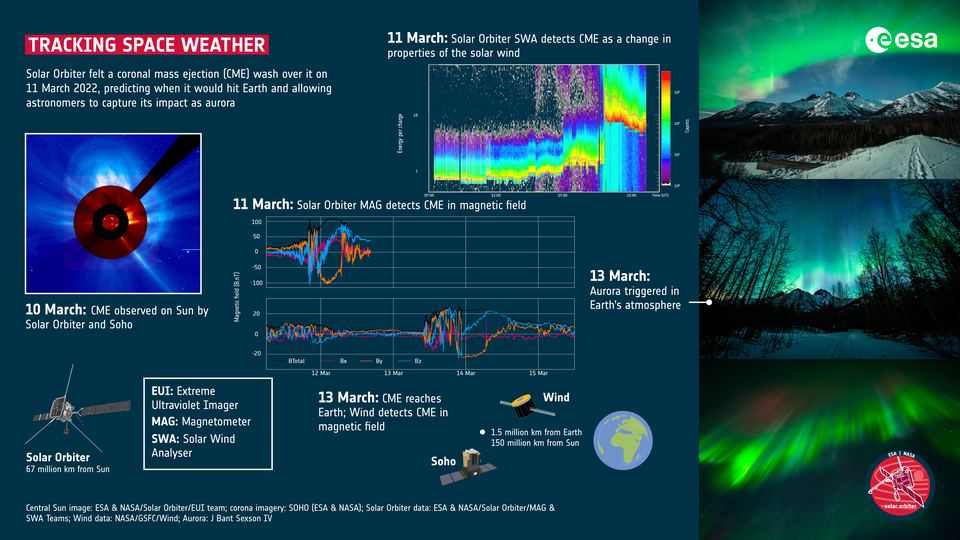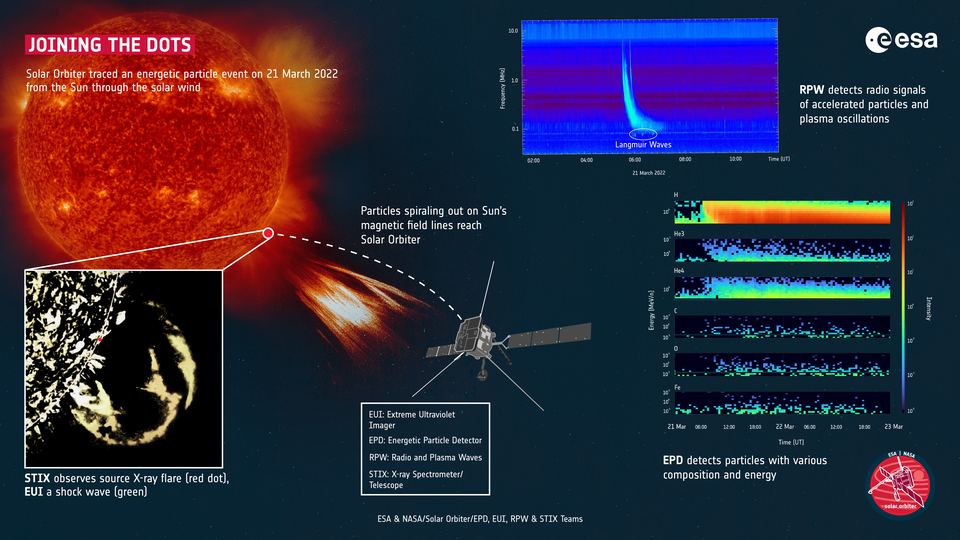Solar Orbiter’s Pictures of the Sun are Every Bit as Dramatic as You Were Hoping
On March 26th, the ESA’s Solar Orbiter made its closest approach to the Sun so far. It ventured inside Mercury’s orbit and was about one-third the distance from Earth to the Sun. It was hot but worth it.
The Solar Orbiter’s primary mission is to understand the connection between the Sun and its heliosphere, and new images from the close approach are helping build that understanding.
According to the ESA, the Solar Orbiter is the most complex scientific laboratory ever sent to the Sun. It carries a robust suite of instruments, including a Magnetometer, an Extreme Ultraviolet Imager, a Solar Wind Plasma Analyzer, and others. Its broad range of instruments allows it to observe solar events in multiple ways.
The spacecraft benefits from getting as close to the Sun as it can. But close approaches make the Solar Orbiter hot. The spacecraft’s first line of defence is its heat shield. It’s a multi-layered titanium device mounted on a honeycomb aluminum support, with carbon fibre skins designed to shed heat. Between all that and the spacecraft’s body, there are another 28 layers of insulation. During this approach, its heat shield reached 500 Celsius (932 F.)
Protected from the heat, the Solar Orbiter gathered a lot of data in its approach. Scientists need more time to work with it and understand it, but the images and videos are immediately engaging. One of the Sun’s features that caught everyone’s attention is the “space hedgehog.”
Thanks to a bit of luck, the Sun put on a show during the Solar Orbiter’s approach. There were solar flares, and even a coronal mass ejection (CME) directed toward Earth. The Solar Orbiter has several remote sensing instruments, and scientists used them to forecast when the CME would reach Earth. They released their forecast on social media, and 18 hours later, Earthly observers were prepped to witness the resulting aurora. ESA released a graphic to explain how that played out.

The following video features images of the flares and the CME from three of the Solar Orbiter’s instruments: the Extreme Ultraviolet Imager, the Metis coronagraph, and SoloHI, the Solar Orbiter Heliospheric Imager.
The ESA created an infographic that helps explain what the video shows.

The Orbiter also gave us our highest-resolution image of the Sun’s south pole.
Scientists are interested in the Sun’s poles because of how the Sun’s magnetic fields work. The magnetic fields create the powerful but temporary active regions on the Sun’s surface, and the fields get swept up and down to the poles before being swallowed by the Sun again. Scientists think that they somehow act as seeds for the next solar activity. The detailed images from the Sun’s south pole should help researchers understand how this all works.
In the video of the Sun’s south pole, the lighter regions are mostly magnetic loops rising from the Sun’s interior. They’re called closed magnetic field lines because particles have difficulty crossing them. Instead, the particles become trapped and emit extreme ultraviolet radiation, which the Solar Orbiter’s Extreme Ultraviolet Imager (EUI) is poised to capture.
The darker regions in the video are where the Sun’s magnetic field lines are open. Instead of being closed to particles and trapping them, gasses can escape into space from these darker regions. That creates solar wind.
The Orbiter also captured images and data of a March 2nd solar flare. The spacecraft’s Extreme Ultraviolet Imager (EUI) and the X-ray Spectrometer/Telescope (STIX) instruments captured the flare as solar atmospheric gases reached temperatures of about one million degrees C (1,8000,000 F) and emitted extreme ultraviolet energy and x-rays.
In the gif below, lower-energy X-rays are displayed in red, and higher-energy X-rays are in blue.
There’s a lot more to come from the Solar Orbiter. Over the next four years, the spacecraft will encounter Venus for a fourth and fifth time. Each time it does so, it’ll increase its inclination, giving it more direct views of the Sun’s poles. By December 2026, it’ll be orbitally inclined at 24 degrees, marking the start of the spacecraft’s “high-latitude” mission.
Those high-latitude observations will give scientists line-of-sight views of the poles. The ESA says those views are crucial to disentangling the Sun’s complex magnetic polar environment. That could help unravel the mystery of the Sun’s 11-year cycles.
“We are so thrilled with the quality of the data from our first perihelion,” said Daniel Müller, ESA Project Scientist for Solar Orbiter. “It’s almost hard to believe that this is just the start of the mission. We are going to be very busy indeed.”
More:
- Press Release: The Sun as you’ve never seen it before
- Solar Orbiter: Mission Operations
- Universe Today: ESA’s Solar Orbiter Takes a Ludicrously High-Resolution Image of the Sun
The post Solar Orbiter’s Pictures of the Sun are Every Bit as Dramatic as You Were Hoping appeared first on Universe Today.
Universe Today
Go to Source